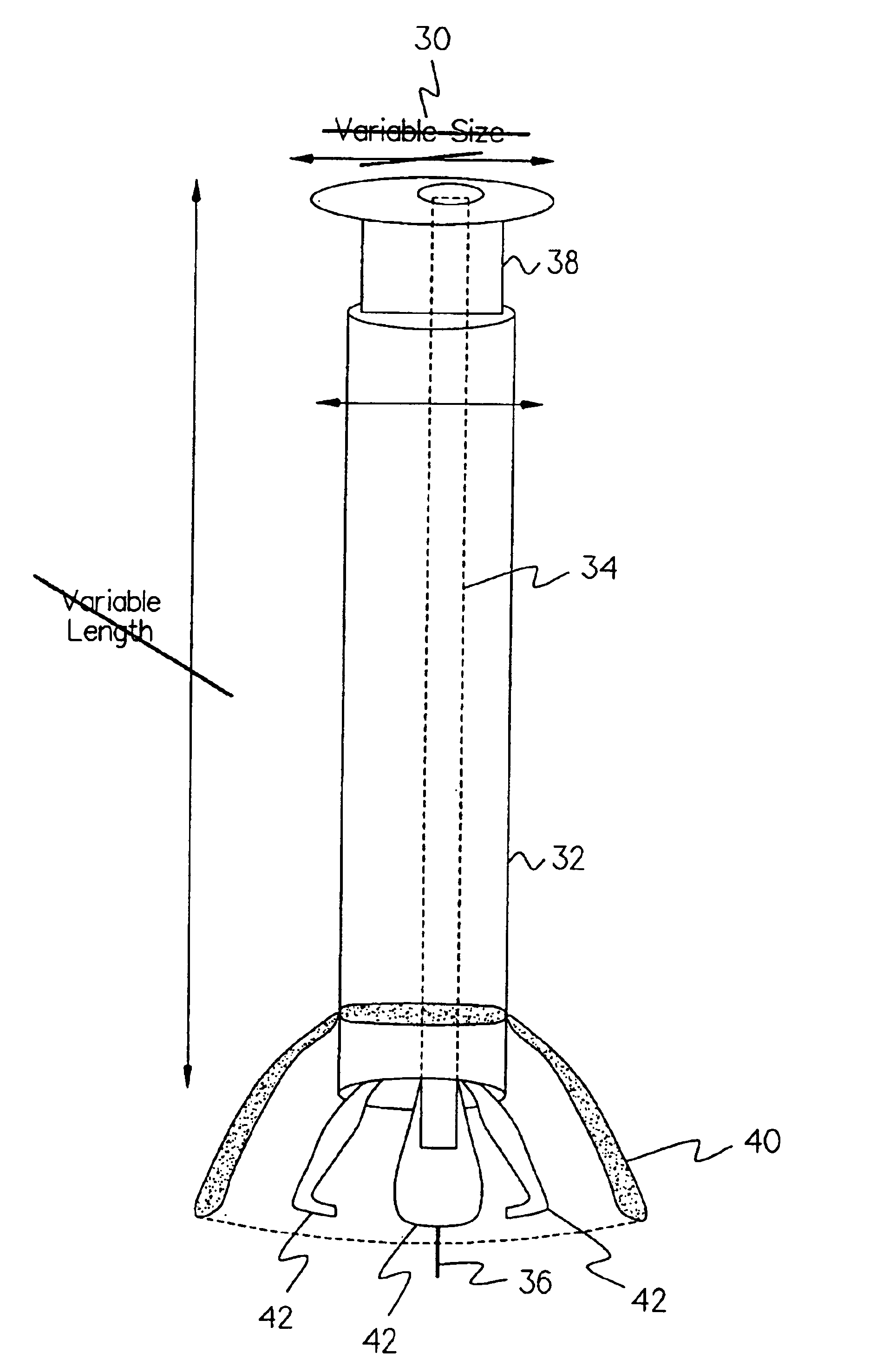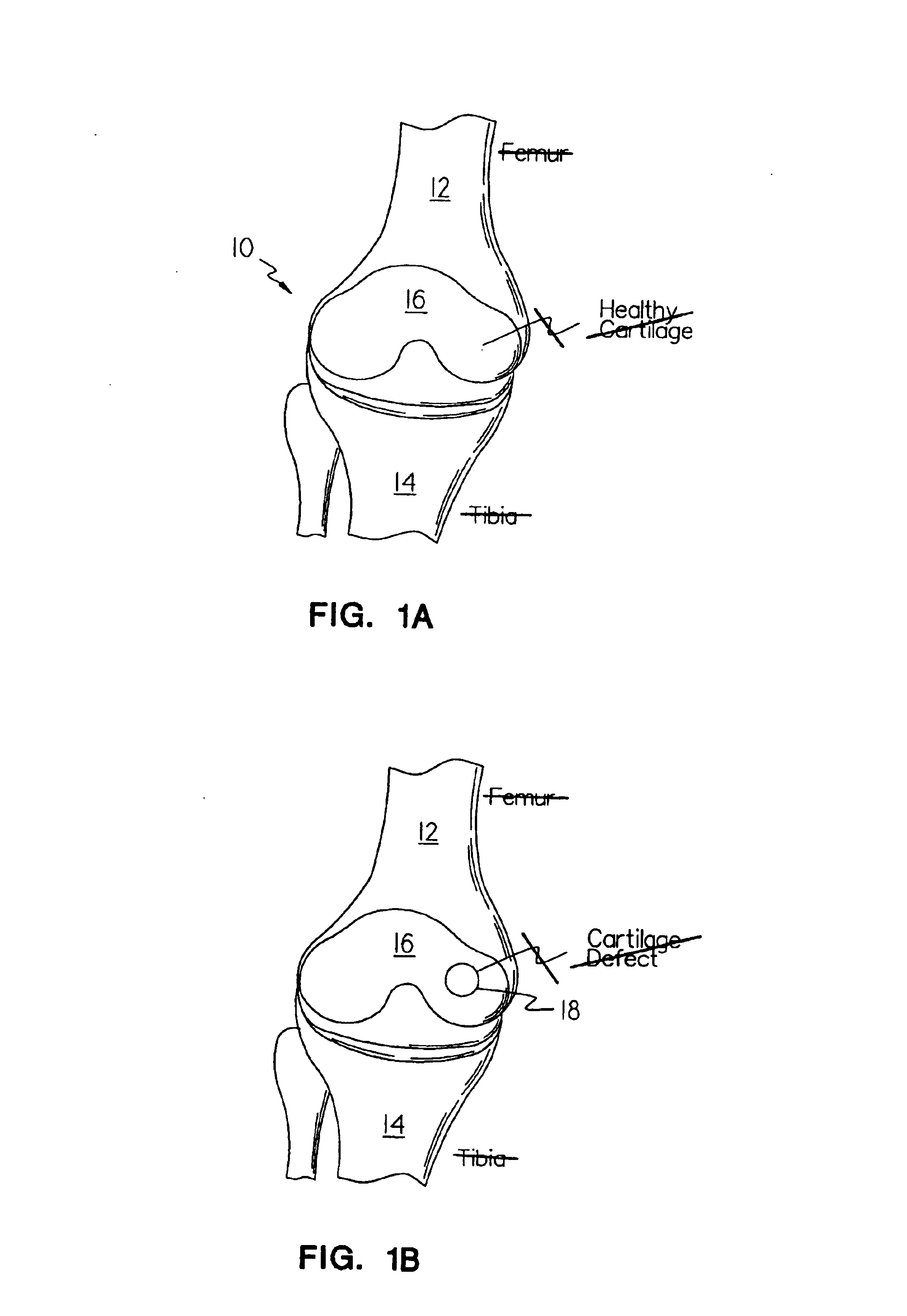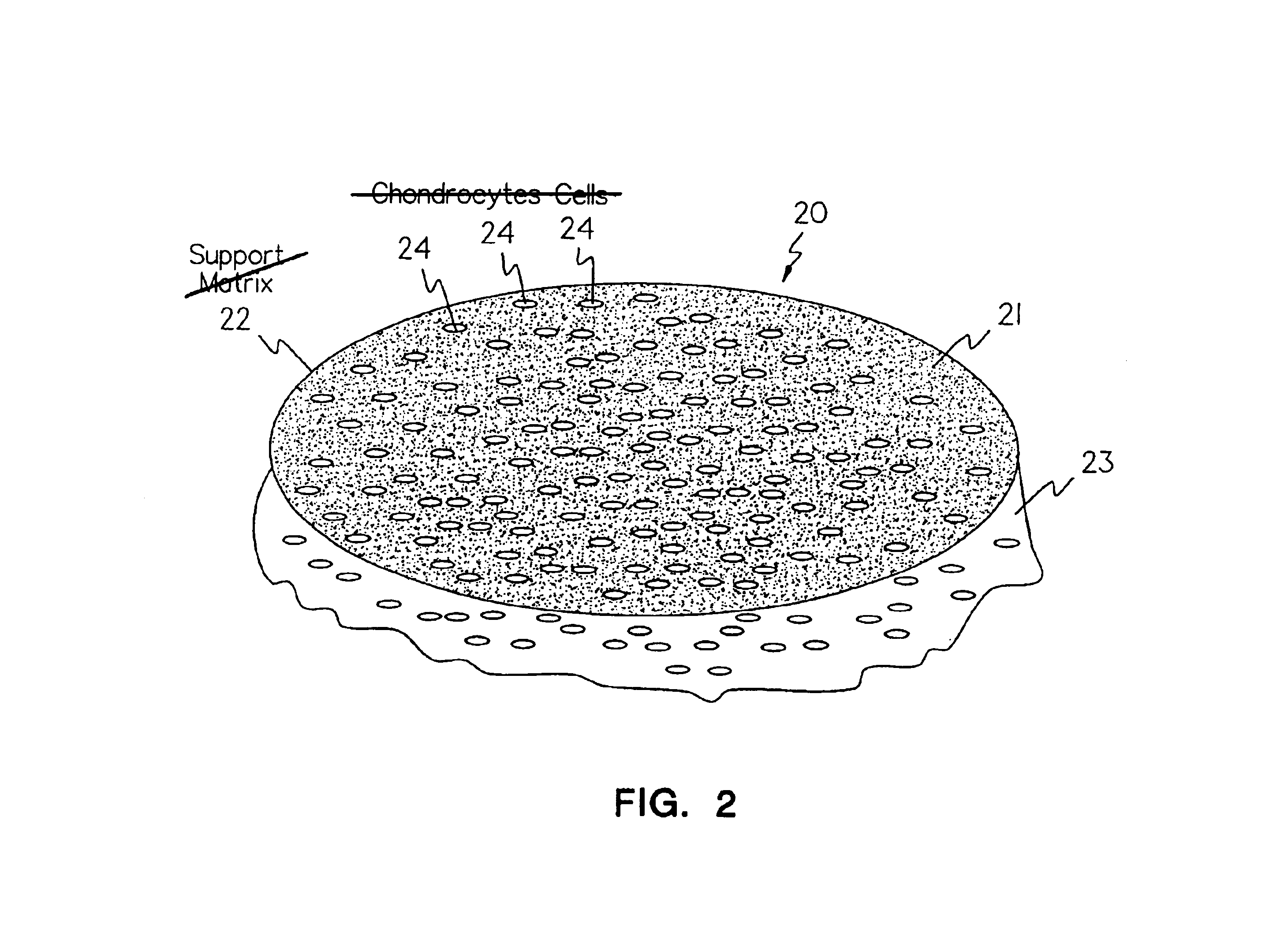Methods, instruments and materials for chondrocyte cell transplantation
a chondrocyte and chondrocyte technology, applied in the direction of prosthesis, surgical staples, osteosynthesis devices, etc., can solve the problems of affecting the function of the chondrocyte cell transplantation process, and reducing the biomechanical properties of the functional tissue. , to achieve the effect of effective treatment of the articulating joint surface cartilag
- Summary
- Abstract
- Description
- Claims
- Application Information
AI Technical Summary
Benefits of technology
Problems solved by technology
Method used
Image
Examples
example 1
Chondrocyte cells were grown for three weeks in the growth media described above in a CO2 incubator at 37° C. and handled in a Class 100 laboratory at Verigen Transplantation Service ApS, Copenhagen, DK or at University of Lübeck, Lübeck, Germany. [Note that other compositions of growth media may also be used for culturing the chondrocyte cells.] The cells were trypsinised using trypsin EDTA for 5 to 10 minutes and counted using Trypan Blue viability staining in a Bürker-Türk chamber. The cell count was adjusted to 7.5×105 chondrocyte cells per milliliter. One NUNCLON™ plate was uncovered in the Class 100 laboratory.
A support matrix material, specifically a Chondro-Gide® collagen membrane, was cut to a suitable size to fit into the bottom of a well in a NUNCLON™ cell culture tray. In this case a circle of a size of approximately 4 cm was placed under aseptic conditions on the bottom of the well.
After three weeks, chondrocyte cells were transferred from the growth media to the transp...
example 2
Chondrocytes were grown for three weeks in the growth media described above in a CO2 incubator at 37° C. and handled in a Class 100 laboratory at Verigen Transplantation Service ApS, Copenhagen, DK or at University of Lübeck, Germany. The cells were trypsinised using trypsin EDTA for 5 to 10 minutes and counted using Trypan Blue viability staining in a Bürker-Türk chamber. The chondrocyte cell count was adjusted to 5×105 chondrocyte cells per milliliter. One NUNCLON™ plate was uncovered in the Class 100 laboratory.
The Chondro-Gide® support matrix, as in Example 1, was cut to a suitable size fitting into the bottom of a well in the NUNCLON™ cell culture tray. In this case a circle of approximately 4 cm in diameter was placed under aseptic conditions on the bottom of the well.
After three weeks, the chondrocyte cells were transferred from the growth media to the transplant media described above, and approximately 5×105 cells in 5 ml transplant media were placed directly on top of the s...
example 3
Chondrocytes were grown for three weeks in the growth media described above in a CO2 incubator at 37° C. and handled in a Class 100 laboratory at Verigen Transplantation Service ApS, Copenhagen, DK or at University of Lübeck, Germany. The chondrocyte cells were trypsinised using trypsin EDTA for 5 to 10 minutes and counted using Trypan Blue viability staining in a Bürker-Türk chamber. The chondrocyte cell count was adjusted to 5×105 chondrocyte cells per milliliter. One NUNCLON™ plate was uncovered in the Class 100 laboratory.
The Chondro-Gide® support matrix, as in Example 1, was cut to a suitable size fitting into the bottom of a well in the NUNCLON™ cell culture tray. In this case a circle of approximately 4 cm in diameter was placed under aseptic conditions on the bottom of the well.
After three weeks, the chondrocyte cells were transferred from the growth media to the transplant media described above, and approximately 5×106 cells in 5 ml transplant media were placed directly on ...
PUM
| Property | Measurement | Unit |
|---|---|---|
| Flexibility | aaaaa | aaaaa |
| Bioabsorbable | aaaaa | aaaaa |
Abstract
Description
Claims
Application Information
 Login to View More
Login to View More - R&D
- Intellectual Property
- Life Sciences
- Materials
- Tech Scout
- Unparalleled Data Quality
- Higher Quality Content
- 60% Fewer Hallucinations
Browse by: Latest US Patents, China's latest patents, Technical Efficacy Thesaurus, Application Domain, Technology Topic, Popular Technical Reports.
© 2025 PatSnap. All rights reserved.Legal|Privacy policy|Modern Slavery Act Transparency Statement|Sitemap|About US| Contact US: help@patsnap.com



